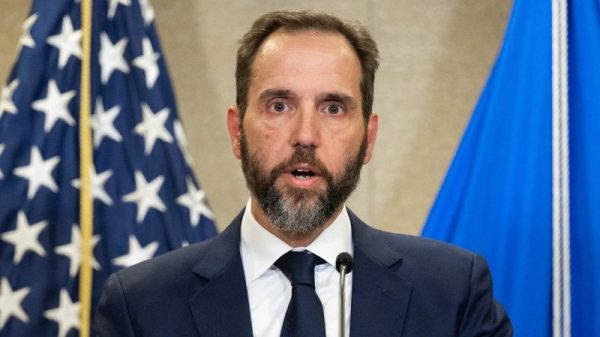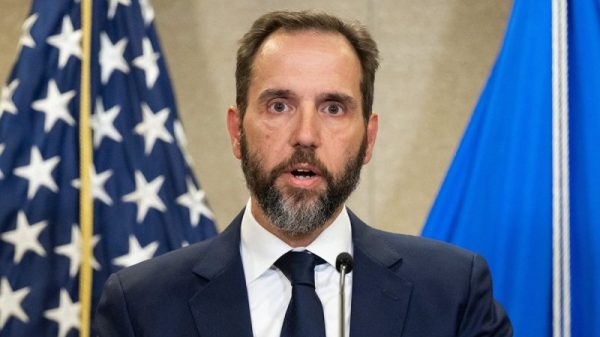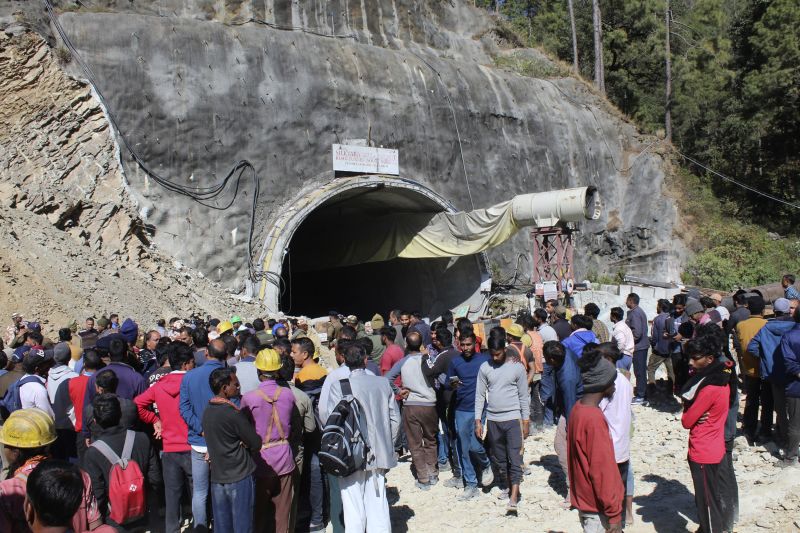Indian authorities trying to rescue dozens of workers trapped for more than 90 hours deep inside a Himalayan mountain have reached out for international help, contacting the Thai team that rescued a boys’ soccer team from a flooded cave in 2018.
The 40 men have been trapped since a tunnel collapsed during construction work in northern Uttarakhand state on Sunday, with rescue efforts becoming more urgent amid reports some are becoming ill.
Four days after the incident, authorities flew in a high-powered drill from the capital New Delhi to begin work on a rescue tunnel early Thursday as anger grew among relatives outside the tunnel’s entrance.
Authorities said they were exploring all options to reach the men, including contacting teams experienced in delicate rescue missions.
“Help is being taken from special teams from Norway and Thailand,” a statement shared by Uttarkashi District Information Officer, Kirti Panwar, said.
“The rescue team has contacted the Thailand company which had rescued the children trapped in the cave,” it added.
Twelve boys and their soccer coach were rescued after nearly three weeks trapped inside the flooded Tham Luang cave by a specialist cave diving team in 2018.
Indian authorities have also reached out to the Norwegian Geotechnical Institute (NGI) to get advice, the statement said.
In a statement Thursday, NGI said its Indian partner, Indian Railways, RVNL, is assisting with the rescue operation but the agency is “not involved now.”
Fragile rock
The men – all migrant laborers from other states – were helping to construct the tunnel, part of an ambitious but controversial project to upgrade India’s transport network, when part of the passageway leading to the entrance gave way, trapping them some 60 meters inside the mountain with little oxygen, food and water.
Authorities established contact with the men soon after the collapse and have since embarked on a frantic mission to bring them out safely, aided by local police, India’s Disaster Management Authority and State Disaster Response Fund.
Rescuers first attempted to dig through the debris to reach the men, but progress was slow as more rubble fell into the shaft.
“The nature of the rock is very fragile, the more we drill the more it comes out, but we are still trying whatever techniques we have,” Anshu Manish Khalkho, director of administration and finance from the National Highways and Infrastructure Development Corporation told reporters Wednesday.
Authorities then brought in a drill to try to create a hole wide enough to insert a pipe through which the men could crawl to safety. But work was paused late Tuesday after a landslide complicated efforts and officials decided the machine wasn’t powerful enough.
Late Wednesday, the higher-powered drill was flown in to create the hole for the escape pipe.
“If this fails, we have a third and fourth backup plan. We are exploring all options to bring our brothers out,” Khalkho said.
“While without seeing the patient one can only say so much, the people I spoke to complained of vomiting and headaches,” said Dr. B.S. Pokriyal. “They are suffering from anxiety and gastritis. We sent medicines, dry fruits, chickpeas, and puffed rice.”
The men have about 1 kilometer (0.6 miles) of space to walk around, Pokriyal said.
“They kept asking us to get them out fast, so I spent some time counselling and motivating them,” he added.
Ambitious project
The tunnel is part of Indian prime minister Narendra Modi’s Char Dham Highway project, a multimillion-dollar infrastructure plan to improve connectivity in the state of Uttarakhand and better access to important pilgrimage locations.
Uttarakhand, a mountainous and picturesque state on India’s border with China, is often referred to as “Devbhumi” or “Land of the Gods” owing to its rich cultural heritage and the abundance of Hindu religious sites.
The Char Dham Highway project is expected to be nearly 1,000 kilometers (621 miles) long, improving access to the state from India’s capital New Delhi. But its development has come at a deep environmental cost with the large-scale destruction of forests.
The project has received criticism from environmentalists who say the heavy construction could seriously damage the Himalayan region, where millions are already feeling the impact of the climate crisis. Experts say the heavy drilling could weaken already fragile terrain, causing more landslides and flash flooding.
And Sunday’s collapse is one of a number of recent construction disasters to make headlines in India, a country that has been rapidly transforming its infrastructure and spending billions to upgrade its transport network.
In August, more than a dozen workers were killed after a bridge under construction collapsed in the northeastern state of Mizoram. In June, a four-lane concrete bridge that was being built across the River Ganges in the eastern state of Bihar collapsed for the second time in just over a year, raising questions about the quality of its construction.






































